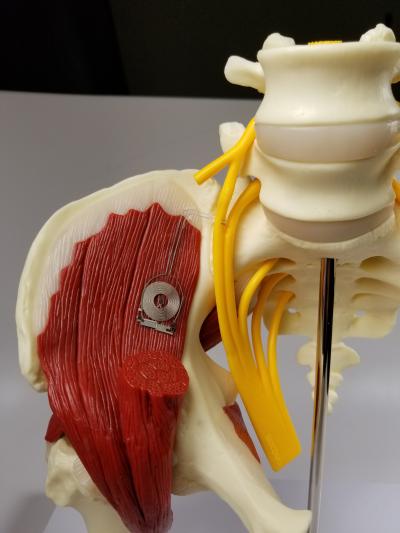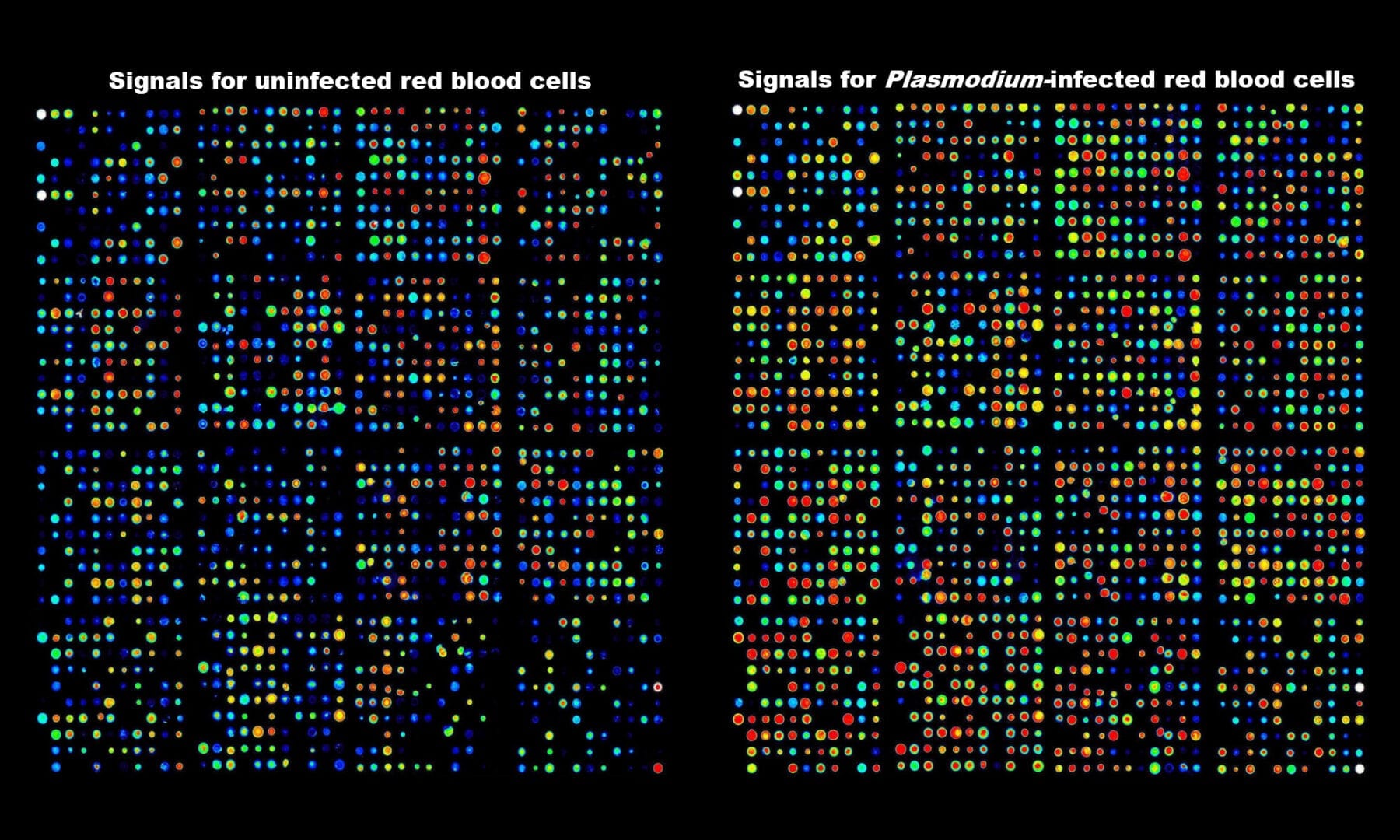
A University of Alberta researcher has found a treatment that increases the speed of nerve regeneration by three to five times, which may one day lead to much better outcomes for trauma surgery patients.
“We use the term ‘time is muscle,’” said Christine Webber, an associate professor in the U of A’s anatomy division and a member of the Neuroscience and Mental Health Institute. “If that regrowing nerve can’t get to the muscle fast enough, you’re not going to get a functional repair.”
Peripheral nerve injury occurs in about three per cent of trauma victims. The slow nature of nerve regeneration means that often muscles atrophy before the nerve has a chance to grow and reconnect.
That’s where conditioning electrical stimulation (CES) comes in.
Webber and her collaborators—plastic surgery resident and former PhD student Jenna-Lynn Senger, and physical rehabilitation clinician Ming Chan—have examined CES for animal nerve regeneration in many previous publications. The process involves electrically stimulating a nerve at the fairly low rate of 20 hertz for one hour. A week after the CES treatment, nerve surgery is done, and the nerves grow back three to five times faster than if the surgery was done without CES.
In their latest work on CES, Webber’s group examined animal models with foot drop, a common injury that affects patients’ quality of life by impeding their ability to walk normally. Previously, the only treatments for foot drop were orthotics that affect a patient’s gait, or surgery.
Webber’s lab performed a distal nerve transfer in which a nerve near the damaged one was electrically stimulated, then a week later a branch of the nerve was cut and placed near the target of the non-functioning nerve. The newly transferred nerve would then be primed and ready to regrow, at a much faster rate, into the muscles that lift the foot.
CES can be a tool for faster nerve regrowth in any portion of the peripheral nervous system. Chan, also a Neuroscience and Mental Health Institute member, has started a clinical trial in which CES is used before a nerve repair of the carpal tunnel.
Webber hopes to bring the information gained from examining nerve transfers in the leg—a difficult body part for nerve regrowth due to the vast area the nerve must cover—to clinical trials within the next year or two.
The Latest Updates from Bing News & Google News
Go deeper with Bing News on:
Nerve regeneration
- Nerve Repair and Regeneration Market Beyond the Horizon Envisioning the Future of Market Size Analysis
Nerve Repair and Regeneration Market is valued approximately at USD 5.72 billion in 2019 and is anticipated to grow with a healthy growth rate of more than 9.15% over the forecast period 2020-2027.
- Completely New Use Discovered – This Traditional Herb Has Remarkable Nerve Regenerative Properties
Blessed thistle (Cnicus benedictus), a member of the Asteraceae family, thrives in our climate. This plant has been utilized for centuries as a medicinal herb, often consumed as an extract or tea to ...
- Thistle extract accelerates nerve regeneration by up to 29%
Nature has again proven effective in treating health conditions, this time nerve injury. According to a new study, a compound found in the blessed thistle plant accelerates the regeneration of damaged ...
- Blessed Thistle's Healing Power: Cnicin's Pharmacokinetics and Axon Regrowth Discovered
Read more about this promising plant extract to aid drug development for nerve injury. | Drug Discovery And Development ...
- New compound from blessed thistle promotes functional nerve regeneration
Blessed thistle (Cnicus benedictus) is a plant in the family Asteraceae. For centuries, it has been used as a medicinal herb as an extract or tea, e.g. to aid the digestive system. Researchers have ...
Go deeper with Google Headlines on:
Nerve regeneration
[google_news title=”” keyword=”nerve regeneration” num_posts=”5″ blurb_length=”0″ show_thumb=”left”]
Go deeper with Bing News on:
Conditioning electrical stimulation
- Medtronic wins FDA approval for adjustable spine-pain implant
Medtronic said that the FDA approved its new spinal implant, which delivers a variable electrical pulse to interrupt pain signals before they reach the brain.
- Global Functional Electrical Stimulation Industry
Global Functional Electrical Stimulation Industry projects a 4.1% CAGR to US$ 931.4 Million by 2033, driven by spinal cord injury prevalence ...
- Does Electrical Muscle Stimulation Really Supercharge Your Workouts?
Electrical muscle stimulation (EMS) workouts are having a moment—not for the first time, and probably not for the last—based on their futuristic vibes and the fitness industry’s constant quest to sell ...
- Brain Stimulation Shows Promise for Alleviating Depression and Anxiety
A University of Florida study indicates that transcranial direct current stimulation (tDCS) effectively alleviates depression and anxiety in older adults, offering a noninvasive, drug-free treatment ...
- Exclusive-TikTok quizzed by EU on TikTok Lite launch in France, Spain
ByteDance's TikTok has been given 24 hours to provide a risk assessment on its new app TikTok Lite launched this month in France and Spain on concerns of its potential impact on children and users' ...
Go deeper with Google Headlines on:
Conditioning electrical stimulation
[google_news title=”” keyword=”conditioning electrical stimulation” num_posts=”5″ blurb_length=”0″ show_thumb=”left”]










